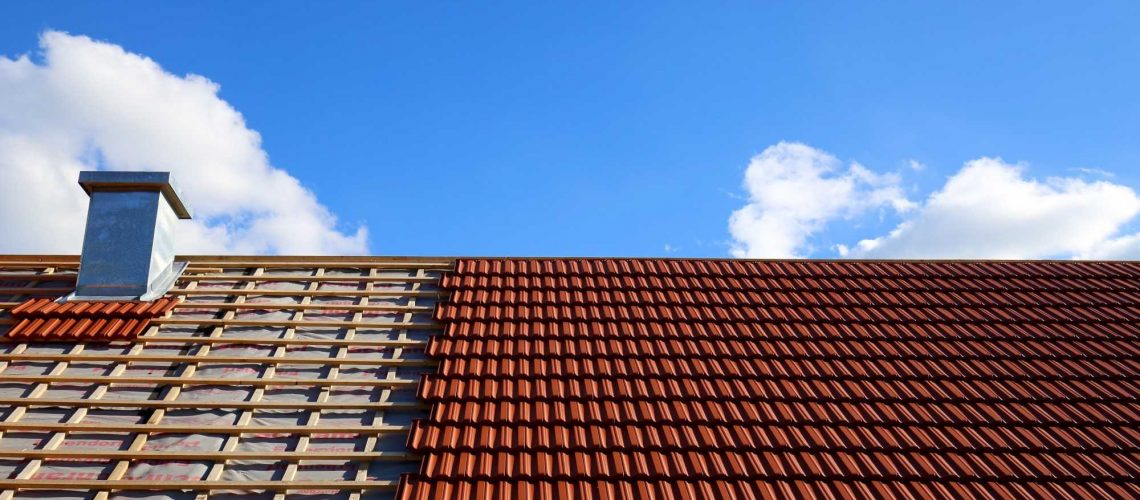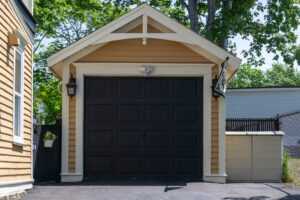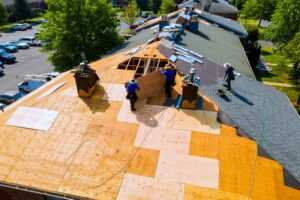Do you need a new roof for your home? Or are you building a home and are wondering about your various residential roofing options? Either way, we can help.
The guide below lists the top types of residential roofing systems for you to consider. We also explain the pros and cons of these common types of roof materials, including how long they last and how expensive they are.
After all, we know that a new roof is a big investment. So, we want to help you get the most out of it. Use the information in this guide to choose the best roof for your needs/budget.
Sloped Roofing Systems For Homes
The most common roofs for residences are sloped roofing systems. Here are your options for a sloped roof.
1. Asphalt Shingle Roofs
Arguably the most popular residential roof of all is the standard, asphalt shingle roof. And why wouldn’t it be?
It’s one of the most budget-friendly options you can buy and it’s low-maintenance. Plus, it’s durable enough to withstand most weather conditions. For most homeowners, an asphalt shingle roof will last about 15-20 years.
Although, high winds can sometimes blow the asphalt shingles off the roof. If you live in a windy area, you might want to consider another roof type.
2. Metal Roofing
Metal roofs are extremely durable and long-lasting. Plus, there are many different metal roofing materials to choose from. Depending on the type, your metal roof can last from 50-100 years!
Obviously, the longer-lasting varieties, like copper or zinc, will cost more. On the other hand, an aluminum roof is very affordable. Specifically, it’s about the same price as an asphalt shingle roof and yet it will last more than 30 years longer.
However, the biggest drawback of metal roofs is that they make lots and lots of noise any time it rains or hails. This isn’t much of a problem if you live in a dry area. But if your location gets a lot of precipitation, you should choose a different option.
3. Wood Shake/Shingle Roofs
Wood roofs are usually chosen because of their rustic, natural appearance. These are available in machine-cut shingles or manually cut shakes, layered in the same way as asphalt shingle roofing.
The durability of each wood roof varies by the type of wood it’s made of. Typically, though, it should last for around 30 years.
You must know, however, wood roofs need regular maintenance to maximize their lifespan. If you neglect this maintenance, the roof will more quickly deteriorate.
Fortunately, this maintenance isn’t all that difficult. You mostly need to keep the roof clear of debris that can hold moisture against your roof and cause it to rot.
4. Clay/Concrete Tiles
There are many, many good things to be said about clay/concrete tile roofing. For instance, it’s extremely durable and resistant to weather. And it should last for about 50 years at least.
However, most people choose these roofs because they look amazing on top of their homes. Really, you can have the tiles shaped, colored, and textured however you like. Though, the most popular choice is the red tile roof that resembles an upscale European villa.
For all these reasons, tile roofs are more expensive than many of the other options on this list. That’s also because they are heavy and, as such, they may require special reinforcement during installation.
5. Slate Roofing
Slate roofing is amazing in all the same ways as tile roofing. Namely, it’s gorgeous, durable, heavy, and very expensive. Also, slate roofs are known to last more than 100 years.
Flat Roofing Systems For Homes
Flat roofs are not as common for homes as they are for commercial buildings. Still, they offer many unique benefits that most homeowners aren’t aware of. Here are a few flat roofing options for you to consider.
1. Built-Up Roofing
Built-up roofing, commonly known as BUR, is basically a flat version of an asphalt shingle roof. It, too, is made of asphalt. But BUR is layered differently than a shingled roof.
Instead of shingles, the asphalt is laid out in sheets that cover the whole rooftop. Several of these sheets are layered on top of each other, one at a time, to form the completed roof.
As you can imagine, this thick, heavy roof is very durable, much like a paved street that’s several layers thick. Because of this, you actually can use it as an additional floor of your home for outdoor activities.
However, this also means that the installation of BUR is a lot like installing a parking lot on top of your house. It’s noisy, messy, and smelly and the home will probably be uninhabitable until this process is completed. Once it’s finished, though, it should last 15-20 years.
2. Modified Bitumen Roofs
Modified bitumen roofing and BUR are layered in pretty much the same way. But there’s one main difference between them. Namely, they’re made out of different materials: bitumen vs tar.
Bitumen is similar to tar except that it’s lighter and more durable in a lot of ways. Thus, modified bitumen roofs need only 2 layers, far less than BUR installation requires.
As a result, these roofs are very light. That means they’re easier and usually cheaper to install than BUR.
3. TPO Roofs
TPO (Thermoplastic Polyolefin) is a type of roofing membrane that’s very thin but very durable. It resists not only wind and moisture but UV rays, too. As a bonus, TPO roofing is 100% recyclable.
4. EPDM Roofs
Lastly, EPDM is another type of roofing membrane similar to TPO. This rubber-based material is a powerful barrier against UV rays and weather. And it’s a good insulator, too.
This lightweight roof will last up to 50 years under normal conditions. However, it’s not good for locations that get very hot weather. This can cause the membrane to warp or otherwise wear out faster.
Keep This Guide to Remember the Top Types of Residential Roofing Options
If you’re in the market for a new roof, don’t lose this list. You’ll need this information to help you choose between the many types of residential roofing systems. So, keep this guide bookmarked and use it to make a wise roofing investment.
Or, even better, discuss your options with the roofing professionals here at Freeman Exteriors. Contact us here for a free consultation.




